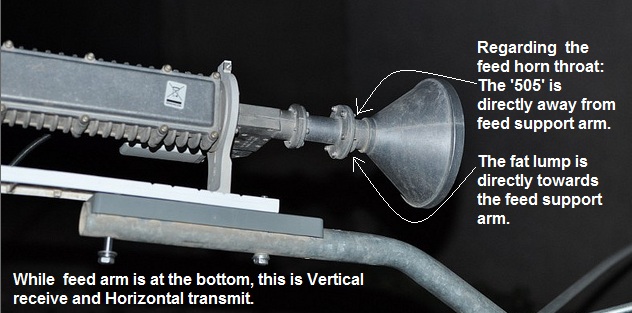| Home Login Register |
| Satellite Internet forum › HughesNet and Hughes HX VSATs › HX50-Iraq- TxCode9 & 13 |
|
Pages: 1
|
HX50-Iraq- TxCode9 & 13(Read 11957 times) |
|
Ex Member
Ex Member
|
Feb 26th, 2011 at 10:55am
|
| Back to top |
IP Logged
|
|
Eric Johnston
Senior Member
★★★ Offline Posts: 2109 |
Reply #1 - Feb 26th, 2011 at 11:18am
|
| Back to top |
« Last Edit: Apr 4th, 2011 at 8:48am by Admin1 »
IP Logged
|
|
USN - Retired
YaBB Moderator
★★★★★ Offline Posts: 837 Kentucky (USA) |
Reply #2 - Feb 26th, 2011 at 12:36pm
|
| Back to top |
USN (Ret)
IP Logged
|
|
Ex Member
Ex Member
|
Reply #3 - Feb 26th, 2011 at 1:09pm
|
| Back to top |
IP Logged
|
|
USN - Retired
YaBB Moderator
★★★★★ Offline Posts: 837 Kentucky (USA) |
Reply #4 - Feb 26th, 2011 at 1:26pm
|
| Back to top |
USN (Ret)
IP Logged
|
|
Ex Member
Ex Member
|
Reply #5 - Feb 26th, 2011 at 2:28pm
|
| Back to top |
IP Logged
|
|
USN - Retired
YaBB Moderator
★★★★★ Offline Posts: 837 Kentucky (USA) |
Reply #6 - Feb 26th, 2011 at 9:13pm
|
| Back to top |
USN (Ret)
IP Logged
|
|
Eric Johnston
Senior Member
★★★ Offline Posts: 2109 |
Reply #7 - Feb 26th, 2011 at 9:42pm
|
| Back to top |
IP Logged
|
|
Ex Member
Ex Member
|
Reply #8 - Feb 27th, 2011 at 12:43pm
|
| Back to top |
IP Logged
|
|
USN - Retired
YaBB Moderator
★★★★★ Offline Posts: 837 Kentucky (USA) |
Reply #9 - Feb 27th, 2011 at 6:55pm
|
| Back to top |
USN (Ret)
IP Logged
|
|
Ex Member
Ex Member
|
Reply #10 - Mar 7th, 2011 at 7:50pm
|
| Back to top |
« Last Edit: Mar 8th, 2011 at 5:12pm by Admin1 »
IP Logged
|
|
Gary-BW
Member
★★ Offline Posts: 12 |
Reply #11 - Mar 8th, 2011 at 4:54pm
|
| Back to top |
Tel: +44 (0) 23 9231 1118 Web: www.bentley-walker.com Email: gary@bentleywalker.com MSN: gary_del@hotmail.com
|
|
Pages: 1
|
Email me: eric@satsig.net
Powered by YaBB 2.5.2!
YaBB Forum Software © 2000-. All Rights Reserved.
Disclaimer, Terms of Use and Privacy Forum User Agreement Forum rules Cookie policy.





